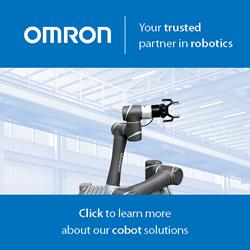Food Robotics Market to Hit $2 Billion by 2028
.jpg)
A recent report from Meticulous Research found that the food robotics industry is anticipated to grow to an astounding $2 billion by 2028. This growth indicates a turning point in the food industry, driven by a number of rising global concerns and trends.
What Is Driving Growth in Robotics?
There are a handful of key factors driving growth in robotics currently. The report from Meticulous Research identified four:
- Increasing food safety regulations: COVID-19 led everyone to think more about where their food comes from and whether or not it is clean and healthy to eat. These concerns remain in 2021, and many food suppliers and restaurants see automation as an efficient way to make food that is consistently contaminant-free. This is of particular concern considering Meticulous Research’s findings, which show that 600 million cases of foodborne diseases and 420,000 deaths worldwide annually result from unsafe food. Automation and robotics could help alleviate the issue.
- Rising investments in the food robotics industry: More money is being invested in developing automation and robotics technology for the food industry and wider market applications. A key consequence is that these new technologies are becoming more available and affordable, allowing more restaurants and companies to utilize them.
- Growing adoption of digitalization in the food and beverage industry: Robotics and automation in the food industry are no longer a niche trend. Some might be inclined to think of Japan’s famous robot cafes, but robotics and automation are becoming more and more a part of the industry worldwide. Likewise, digital dexterity is becoming more common in all industries, as companies are forced to adapt to the rising integration of technology with everyday life. This can be seen in the rising popularity of mobile ordering. Even prior to the surge in demand during COVID-19, the percentage of people visiting restaurants for mobile orders doubled in 2017-2018 alone.
- Growing focus on efficient food packaging: The two robotics and automation applications projected to grow the most by 2028, according to the Meticulous Research report, are palletizing and packaging. These tasks are the perfect application for robotics because they are repetitive and time-consuming, so automation makes the process far more efficient. Additionally, as discussed below, these tasks are boring and potentially dangerous for human employees. Having an automated system take care of them protects workers and allows them to do more challenging, creative jobs.
How Robotics Will Impact Employment
When discussing the rising tide of robotics and automation, many fear robots will take human jobs, creating a wave of unemployment. In a 2017 interview with WIRED, Saru Jayaraman, director of the University of California Berkeley's Food Labor Research Center, weighed in: “There is no need or requirement for automation to replace jobs or reduce wages or in any way hurt human beings.” She went on to reassert that higher minimum wages do not force industries to utilize more automation.
Jayaraman’s conclusions are supported by the findings of the Meticulous Research report. The fact alone that palletizing and packaging are, by far, the two fastest-growing applications of robotics and automation in the food industry is proof of this. For example, some robots are being used to speed up the process of packing and picking items in food and beverage warehouses by scanning lot and serial numbers. The robot scans the serial number, identifies the package or item, and processes it accordingly.
These tasks are repetitive and potentially dangerous. Allowing a robot to perform them increases safety, efficiency, and productivity. When these improve, it is logical to assume profits will improve as well, allowing companies to increase wages for human workers. When robots take over these rote tasks, human employees can be redirected to more rewarding jobs that require social skills, creativity, care, and other things robots simply do not have.
A full robot takeover of the job market is unlikely. What is happening instead is an increase in robots working alongside humans. Meticulous Research found that the three fastest-growing types of robots in the food industry are articulated robots, delta/parallel robots, and collaborative robots. The first two types would be used to automate repetitive tasks, and the third works specifically in collaboration with human workers.
Where Robotics Will Grow the Most
There are certain applications where robotics and automation are anticipated to experience the most growth in the food industry, but there are geographic regions of growth as well. Meticulous Research found that China is by far the most rapidly growing region, already drastically ahead as of 2019.
This is not surprising, considering that China supplies food for one-fifth of the world’s population. Robotics and automation are highly versatile and can meet that demand while improving food safety and company productivity.
The Future of Food
Robotics and automation are becoming more a part of everyday living, and nothing is more central to life than food.
Robotics is not anticipated to hurt job prospects for working individuals. In the food industry of the future, robots and automated systems will work alongside human team members, who will be able to spend their days cooking, creating, and caring for the world’s food while robots help out with the rest.
Comments (0)
This post does not have any comments. Be the first to leave a comment below.
Featured Product

